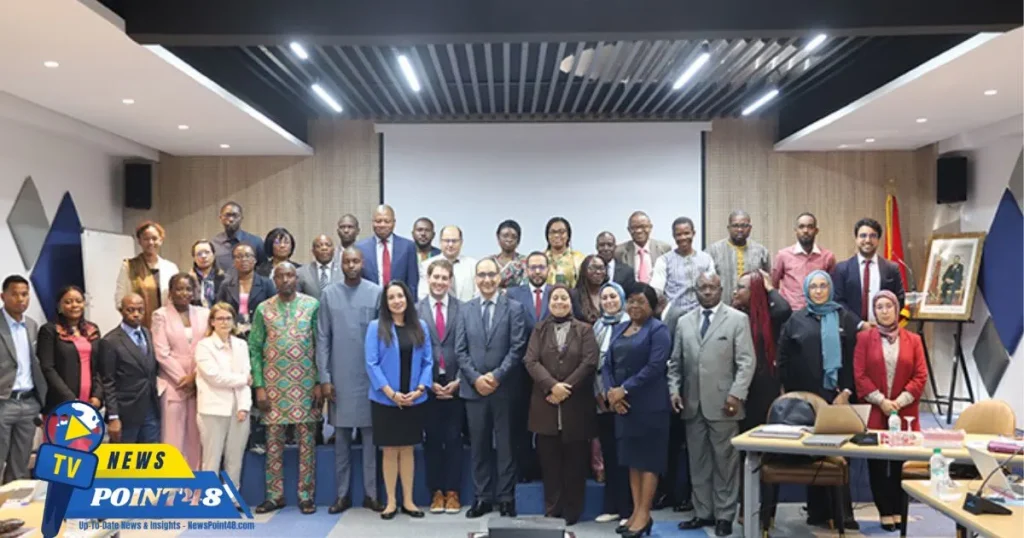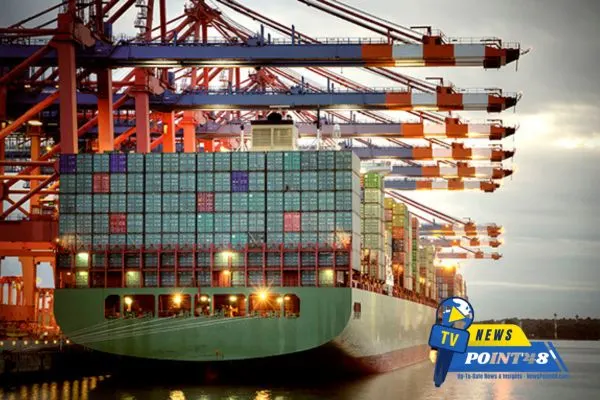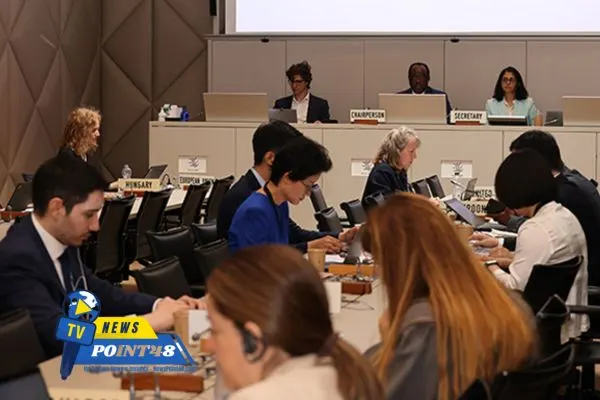
International trade is still largely regulated by the World Trade Organization (WTO) but with renewed attention towards regional trade agreements (RTAs). WTO members convened last week to review four important regional trade agreements with the potential of setting new rules for global trade, promoting economic cooperation, and tackling contemporary challenges in a networked world. These are broad and diverse agreements that underline how regional partnerships can be among the most significant drivers of global economic prosperity.
This post will explain the crux of these four RTAs, why they are important, and the possible implications on the global trade landscape. WTO members examine 4 regional trade agreements
RTAs — Regional Trade Agreements
Image Source Regional Trade Agreements (RTAs): RTAs are trade deals between two or more countries in a specific geographical region. The purpose of these agreements is to reduce or eliminate trade barriers such as tariffs, quotas, and regulations among participating nations to promote free trade. The RTAs, in contrast to WTO rules that apply to international trade, provide countries the latitude to advance their trade relations selectively with regional neighbors. WTO members examine 4 regional trade agreements
The significance of RTAs has increased over last few years due to global supply chain disruptions, economic protectionism, and geopolitical tensions. These agreements are designed to give member states extra tools to promote economic growth, investment, and regional integration. WTO members examine 4 regional trade agreements
Four Regional Trade Agreements Under Discussion
At the latest WTO talks, members examined the progress and potential implications of four major RTAs covering broad geographical regions and cutting across all sectors. Every one of these agreements carries with it the potential for huge economic gains for the nations concerned and yet also presents real threats to multilateral trade systems. Here is a superficial look at the four agreements :
Framework: Africa Continental Free Trade Area (AfCFTA)
The Africa Continental Free Trade Area (AfCFTA) is the most comprehensive trade agreement to be undertaken on the African continent. AfCFTA was signed in 2018 and became operational in 2021 intending to establish a single market for the trade of goods and services across all 54 African Union member states. It is hoped the deal will spur intra-African trade, industrialization, and economic diversification across a continent of 1.3 billion people and a combined GDP of over $3.4 trillion.
In the course of the WTO review, members talked about how AfCFTA would give a radical facelift to Africa’s economic landscape with a big reduction in tariffs, increased trade between African countries, and greater linkages among all the regions. And it creates an opening for African countries to increase their stakes in international value chains.
The Regional Comprehensive Economic Partnership (RCEP)

The Regional Comprehensive Economic Partnership (RCEP) is a free trade agreement between 15 countries in the Asia-Pacific region including China, Japan, South Korea, Australia, and 10 ASEAN member states. RCEP, created in January 2022, represents the world’s largest trade pact encompassing about 30% of global GDP and nearly one-third of the global people.
Members of the WTO said RCEP could show how multilateral collaboration may be advanced in the Asia-Pacific area. It touches an amazingly wide range of areas — it lowers tariffs on goods; makes it easier to move services around the region; strengthens regional supply chains, and much more besides. RCEP is a game-changer for another reason: it can address the existing economic imbalances between developed and developing countries in the Asia-Pacific.
USMCAFor U.S. Companies that need help to meet their USMCA compliance obligations
In 2020, the USMCA took over for NAFTA as a result. The trilateral trade pact intends to further bond trade relations in North America by updating provisions on labor, environmental, and digital trades. It is seen as a major improvement over the NAFTA, which it replaces and which liberals have long derided because (they say) it shortchanges labor rights in Mexico and also for not do enough to address copyright laws.
All Member States of the WTO discussed the main elements of USMCA, emphasizing how it may set a precedent in terms of North American trade relations. The agreement streamlined trade in a vast range of agricultural products helped facilitate giant auto shipments, and also included provisions to resolve data disputes through a new binding arbitration process. The USMCA is a model for future trade deals that include traditional trade elements — such as market access and national treatment— as well as defining new trade rules reflecting the digital arena.
Trade Agreement Between The European Union (EU) And Mercosur
The deal — the European Union (EU)-Mercosur Trade Agreement — comes after over 20 years of negotiations and is one of the biggest ever struck by the EU with a group bloc, which comprises Argentina, Brazil, Paraguay, and Uruguay. Fostering trade and investment flows between the regions by cutting tariffs on products ranging from cars to machinery, chemicals, and food according to this agreement.
Even though the EU-Mercosur agreement has been delayed for years amid concerns over environmental standards and deforestation in the Amazon, WTO members acknowledged that it could boost exports and bilateral trade between Europe and Latin America. Two of the world’s biggest exporters of farming produce and manufactured goods are included in this agreement, so it carries global importance.
The weight of Regional Trade Agreements
The four RTAs embody an emerging global trade reality in which regional ties have been gaining importance. Broadly understood, therefore, there are several inherent explanations as to why RTAs have come to play an important role in international trade.
Economic Growth RTAs encourage trade liberalization resulting t o increased exports and imports and more eco growth It will allow member countries to increase their market access and enhance their competitiveness by reducing tariffs and protectionist measures.
Regional Cooperation Boost:RTAs help build political and economic links among countries situated next to each other. Such supercharged partnership translates to increased regional connectivity, which in turn enables state parties of agreements like RCEP to collectively address shared issues including the development of infrastructure, disruptions faced along supply chains, and environmental grievances.
Greater Market Access: By entering into regional agreements, businesses secure wider market access in partner countries. For small and medium-sized enterprises (SMEs) this is especially important, lacking the access to global markets that these agreements provide.
Protection Against Global Shocks: Countries looking to diversify the sources of imports can try regional trade partnerships to build more resilient supply chains, insulating them from disruptions due to global shocks such as those caused by the COVID-19 pandemic or diplomatic disputes.
THE MULTILATERAL TRADE CHALLENGE
RTAs make significant economic gains, but they could also present challenges to the WTO-led global trading system. The proliferation of these agreements is leading to fears of global trade fragmentation and relegating non-member countries, which have not been part of RTAs. The more countries use regional deals the more trade diversion — when trade moves away from non-member nations — becomes likely.
Thus, WTO members strive to navigate the need for regional trade agreements with an interest in upholding a rules-based multilateral trading system. RTAs must support, not detract from global trade rules and cannot be an avenue towards increased protectionism.

During the WTO review, talk also turned increasingly to four key regional trade agreements, with these discussions underscoring the increasing importance of RTAs in influencing global trade. Indeed, these agreements are creating more regionalized markets whether it is through Africa’s attempt to create an economic union via AfCFTA or by Asia joining hands under the umbrella of RCEP. This needs to happen while addressing the differences that are still present in ensuring country-specific outcomes must conform to the overall objectives of the WTO and ensure such deals contribute towards a fair, open, and rules-based global trading system.
More news blogs related to Global trade and Regional economic partnerships will be updated from time to time only in Newspoint48 your trusted news source with SEO-optimized blogs.
